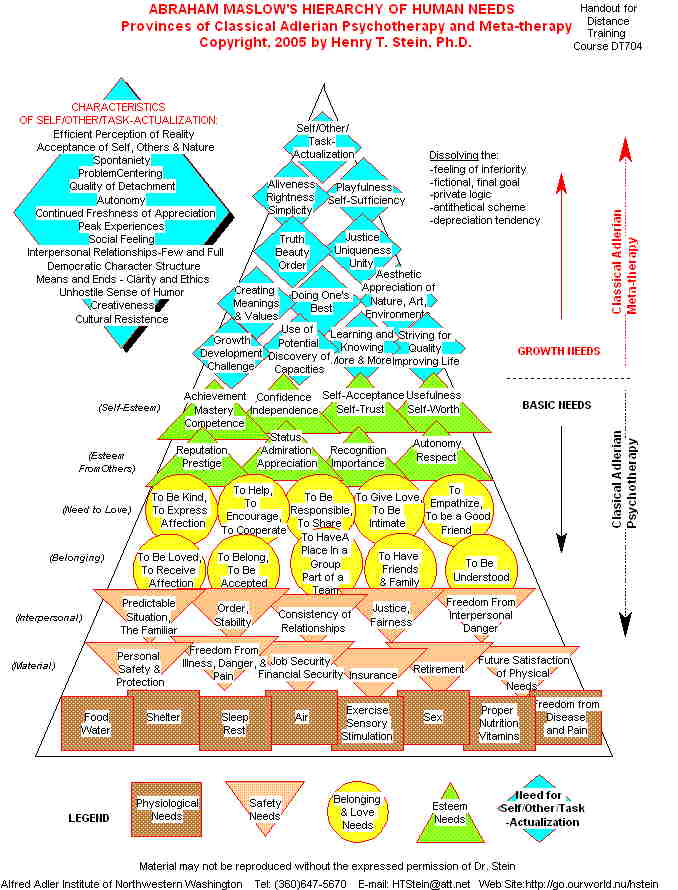


|
Fifty years ago, Abraham Maslow's contributions to the study of optimal human development raised the bar for the discipline of psychotherapy. For several decades, various Humanistic approaches explored strategies and techniques for helping clients become their "best selves." The quest for self-actualization also took several side roads, one into drug experimentation, and the other into training programs for managers in business. However, as a "popular" or "fad" movement, Maslow's ideas have gradually faded from the front pages of psychology. Under the smothering blanket of managed care profits, the practice of psychotherapy has gradually become diluted into cost-effective medication and brief therapy. Relieving (or masking) symptoms and promoting a quick, modest degree of behavioral improvement is now the rallying banner for over-worked under-paid therapists competing for the shrinking insurance dollar. In the midst of this anti-humanistic, tectonic drift, psychotherapy is losing its soul. Swimming against the tide builds muscle, and a worthy challege now faces us--we can re-discover the potential of depth psychotherapy for not only igniting the latent creativity in people, but also multiplying it into a tidal wave of personal and social improvement. The binocular vision for these massively optimistic tasks comes from two dynamos of human potential: Abraham Maslow and Alfred Adler. Maslow gave us the broad vision of what people can become. Adler provided us with the pedagogical and therapeutic artistry to make that ideal a reality. The two graphics below illustrate, in a simplifed way, the "what" and "how" of fostering self/other/task-actualization. The first graphic, "Abraham Maslow's Hierarchy of Human Needs," attempts to illustrate the nuances of human growth. Although Maslow suggested a sequence of need fulfillment, the Classical Adlerian view is more a leveling of basic needs that do not always emerge in sequence, but are all influenced by a single, fictional goal. The second graphic, "The Phases and Stages of Classical Adlerian Psychotherapy," suggests that by gradually dissolving: the inferiority feelings; fictional, final goal; private logic, scheme of apperception; and depreciation tendency through psychotherapy, we help the individual pursue real, achievable paths toward security, esteem, and belonging, instead of fictional blind alleys that never provide deep satisfaction. The color schemes of both charts are not directly correlated with each other; the gradation of colors was chosen mainly for aesthetic appeal. This fusion of Maslow and Adler provides a cauldron of creative power that can inspire us. Hopefully, it will help generate fresh interest in a socially responsible depth psychotherapy that has the potential for bringing out the best in each person, for the benefit of everyone. A living democracy requires active, creative, cooperate people who enjoy giving their best and encouraging others to do the same.

 GENERAL NOTES
|